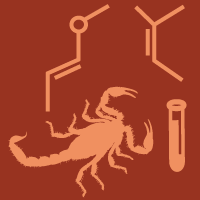Topic Menu
► Topic MenuTopic Editors

2. Department of Biosciences, International Livestock Research Institute, Nairobi 00100, Kenya
3. Department of Medical Biochemistry and Microbiology, Uppsala University, 75123 Uppsala, Sweden

Mycotoxins in Animal Feed and in Animal Source Foods in Developing Countries
Topic Information
Dear Colleagues,
Food and feed security remain a major challenge in developing countries. Worldwide, cereal-based crops are spoiled by toxigenic fungi and their mycotoxins. Mycotoxins in animal feeds can have a large impact on the productivity of livestock, and there is a risk that the mycotoxins can be transferred into the animal products, and thus increasing their risk of exposure to humans. This is particularly true for aflatoxins, where, in developing countries, up to 100% of milk samples may be contaminated. In tropical and low-income countries, the burden posed by mycotoxins is relatively higher, and this is worsened by the often lacking regulatory enforcement of standards. This threatens not only human health, but also the development of the livestock sector, an important source of livelihoods for many smallholder farmers. There is limited data on the impact of mycotoxins on livestock production, as well as on the risks to human health, as a result of consuming contaminated livestock products.
This topic welcomes publications which focus on any aspect of mycotoxins in animal feeds, and animal source foods in tropical and developing countries, including papers studying prevalence, risk factors, impact on animal health, and mitigation options.
Dr. Johanna Lindahl
Prof. Dr. Gunther Antonissen
Dr. Hanna Friberg
Dr. Florence Mutua
Topic Editors
Keywords
- mycotoxins
- aflatoxins
- feed safety
- food safety
- dairy production, animal health
- food security
- mycology
Participating Journals
| Journal Name | Impact Factor | CiteScore | Launched Year | First Decision (median) | APC |
|---|---|---|---|---|---|

Agriculture
|
3.3 | 4.9 | 2011 | 20.2 Days | CHF 2600 |

Animals
|
2.7 | 4.9 | 2011 | 16.1 Days | CHF 2400 |

Dairy
|
- | 4.4 | 2020 | 21.5 Days | CHF 1200 |

Foods
|
4.7 | 7.4 | 2012 | 14.3 Days | CHF 2900 |

Toxins
|
3.9 | 7.5 | 2009 | 18.9 Days | CHF 2700 |

MDPI Topics is cooperating with Preprints.org and has built a direct connection between MDPI journals and Preprints.org. Authors are encouraged to enjoy the benefits by posting a preprint at Preprints.org prior to publication:
- Immediately share your ideas ahead of publication and establish your research priority;
- Protect your idea from being stolen with this time-stamped preprint article;
- Enhance the exposure and impact of your research;
- Receive feedback from your peers in advance;
- Have it indexed in Web of Science (Preprint Citation Index), Google Scholar, Crossref, SHARE, PrePubMed, Scilit and Europe PMC.

